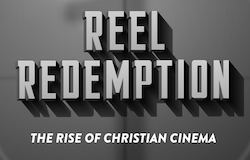The Best of Pictures: Titanic (1997), by Josh Long
1 Jul
 TITANIC (1997)
TITANIC (1997)
Written and directed by: James Cameron
Starring: Leonardo DiCaprio, Kate Winslet, Billy Zane, Gloria Stuart
James Cameron’s Titanic is a film almost as storied as the ill-fated ocean liner itself. It tied the record for most Academy Awards 1, it launched the careers of Leonardo DiCaprio and Kate Winslet, and until Avatar, it was the highest-grossing movie of all time 2. In my own personal studies of film, I made it a point to see every film to win Best Picture, and by 2005 I had – every one but Titanic. Even into my twenties I was still holding the grudge of a fifteen-year old, furious that any movie would have the audacity to beat Star Wars at the box office. Recently, I finally caved so that I could bring my clearly invaluable opinions to you, the reader. So these are my thoughts on Titanic after seeing it for the first time, thirteen years after its theatrical release.
The story isn’t one that hasn’t been told before. The tragedy of the Titanic has been in the collective consciousness of the world since its sinking. In case we were to forget, there have been countless books and several movies to tackle the subject 3. So going into Cameron’s film, we all know pretty much what to expect. The way he tries to make this version of the story unique is two-fold. First, he introduces a love story to give us two identifiable characters to empathize with throughout the catastrophe. Secondly, he comes to the story after years of technological advancements. This puts the film in a position to hype up the spectacle of the catastrophic event in a way not possible before.
Let’s look at the love story. While the film was in theatres, we all heard stories of preteen girls who went to see it ten or fifteen times. I’ve come to the conclusion that fourteen-year old girls love James Cameron’s love stories because he writes like a fourteen-year old girl. The dialogue between Rose (Winslet) and Jack (DiCaprio) is so unbelievably maudlin it’s hard to watch with a straight face. Their performances don’t stand out, but given this Disney Channel soap opera script, they don’t have much to work with. And even though the circumstances are “classic,” it’s been done a thousand times. Rich girl in an unfulfilling relationship meets a boy from the other side of the tracks who shows her all the wonderful things she’s been missing in life. It’s such a by-the-book stereotypical idea, it’s clear that he’s thinking as a producer first. The concern is not to write something new and engaging, but to take ideas that have drawn people in before, jumble them up, and put them on the Titanic.
We also have to endure James Cameron’s half-baked sense of social justice. We’re meant to root for Jack when he entertains the upper crust at the captain’s table, and to fume when the poorer passengers are locked in the lower decks 4. The rich passengers are shown as stodgy, old and boring, while the lower classes are all young, vibrant, and free from prejudice. Meanwhile, Cameron makes these low class characters into ridiculous stereotypes; the highlights are the drunk fighting Irishmen, and an Italian character one “mamma mia” short of Super Mario Brothers. One random shot of a Muslim family in the lower decks seems like Cameron desperately pleading with us to believe that he’s multi-cultural.
All that aside, the film does do a good job of bringing you into its story. It uses Bill Paxton and the “Titanic treasure hunters” to frame the story of Jack and Rose – this lets us see the tragedy both from the personal side and from the historical and academic side. The initial shots of robotic submarines searching the wreckage start us off with an intriguing sense of mystery. We want to know what happened in this place. Once the film gets past the muddle of the love story, we get some very exciting scenes of catastrophe. It’s well directed in giving us a sense of the scope of the disaster and a very realistic and frightening feel of what it would have been like to be there that night.
This is one of the points where the special effects come into play. The technological advances and the sheer amount of money put into the project allowed Titanic to give viewers spectacular scenes of destruction. Everything from flooding staterooms to the ship’s eventual crack in two is shown in frightening extremity. At the same time, there are some sequences (more notable early on) where the film relies too heavily on CGI effects. Some early shots of the whole ship (especially one where the liner’s hull passes a smaller sailboat) look painfully outdated. Where the effects rely partially on CG, it’s effective but entirely CG objects look hokey and fake. But regardless of some outdated effects, we see the sinking of the Titanic in a way film was never able to show it before.
The film is also known for its attention to historical detail. Cameron was apparently obsessed with the minutia of the Titanic, and wanted to create an environment accurate down to the last detail 5. This kind of attention always gives art directors and costume designers a chance to shine – and they certainly did. The sets awe viewers the same way they would have awed passengers on the maiden voyage. The costumes are realistic, yet lived-in; they don’t all have the papery new-old feel that period pieces sometimes do. The necessity to show both the upper and lower classes also gives the designers the chance to show what the style of the era would look like for both rich and poor. Both departments earn their Oscar gold.
Which brings us to the question of the Best Picture Oscar. Does Titanic earn this highest of movie accolades? I’ve mentioned before that Hollywood traditionally loves epics, so movies with this kind of scale often have a good shot at Oscar. Besides that, there is often the tendency to include films that become a phenomenon. Titanic’s massive box office success made it into the movie everyone was talking about. The way it merged exciting spectacle with a classic, if recycled, storyline is what ultimately earned it Best Picture. Some would argue that Curtis Hanson’s L.A. Confidential or Gus Van Sant’s Good Will Hunting better deserved the award, and in many ways, those two might be better films 6. But Hollywood stuck within its comfort zone in 1997, and gave all the glory to a big budget producer’s epic. I personally often prefer to see the award go to a film that is more concerned with the artistry of the medium, but considering the way it became a cultural force, it’s hard to begrudge Titanic the win.
James Cameron makes big movies to make big bucks. The fact that Titanic is able to go a little farther grants it credibility. It’s effective in drawing us into this well-known epic, even if there’s some laughable stereotypes along the way. The attention to detail has fascinated new generations with one of the world’s most famous disasters. Titanic has a lot going for it, even if it did beat Star Wars at the box office.
1. Eleven, tied with 1959’s Ben-Hur, and then again in 2003 with Lord of the Rings: Return of the King. But you knew that.
2. If you haven’t heard me harp on this before, keep in mind that Titanic and Avatar are the highest-grossing in total dollar amount only. With inflation-adjusted numbers and 3D upcharges taken into consideration, Titanic sits at number six, and Avatar at number fourteen.
3. Possibly the most famous was the 1958’s A Night to Remember, based on the Walter Lord novel of the same name.
4. This is apparently completely historically inaccurate, but Cameron is clearly more concerned with a dramatic story than historical verisimilitude.
5. One could complain, and many have, that Cameron’s attention to minute details is moot in contrast with his ignorance of historical details. Still, it can be argued that his concern is with accurately representing the environment, not the history.
6. Good Will Hunting and L.A. Confidential won 1997’s Original Screenplay and Adapted Screenplay Oscars, respectively.



No comments yet